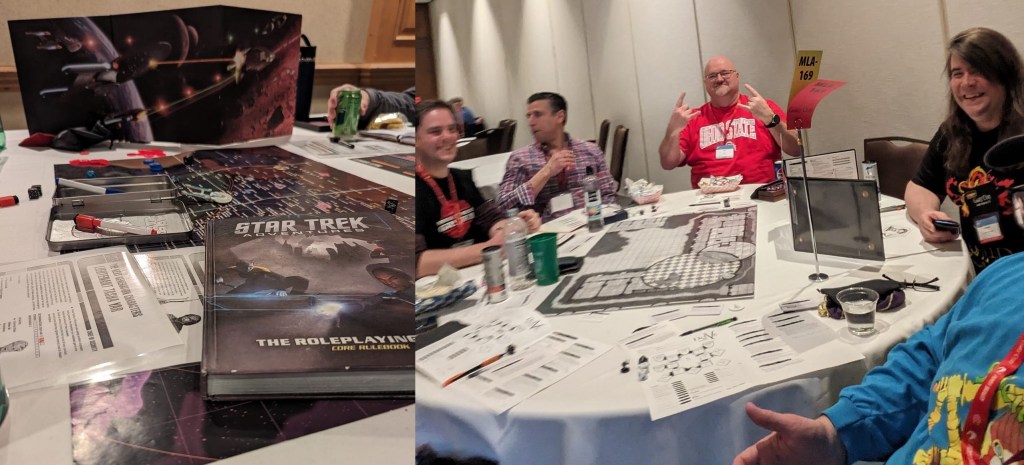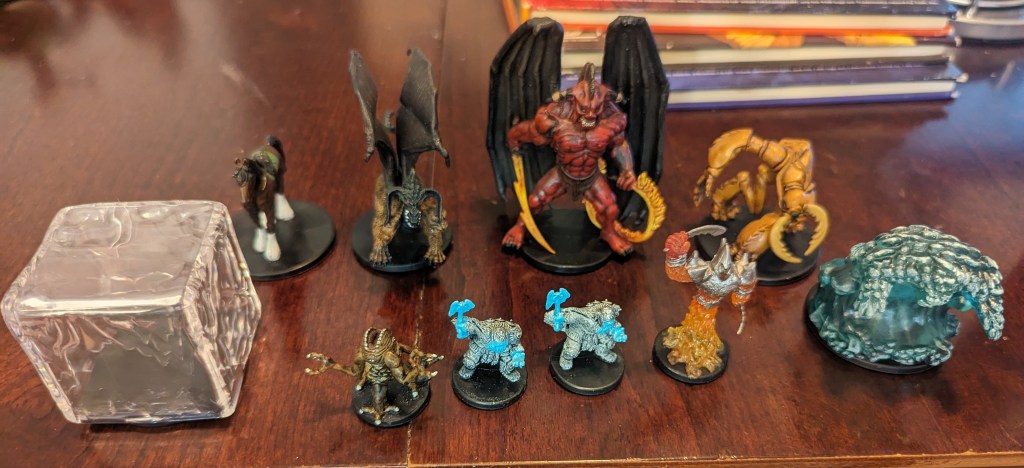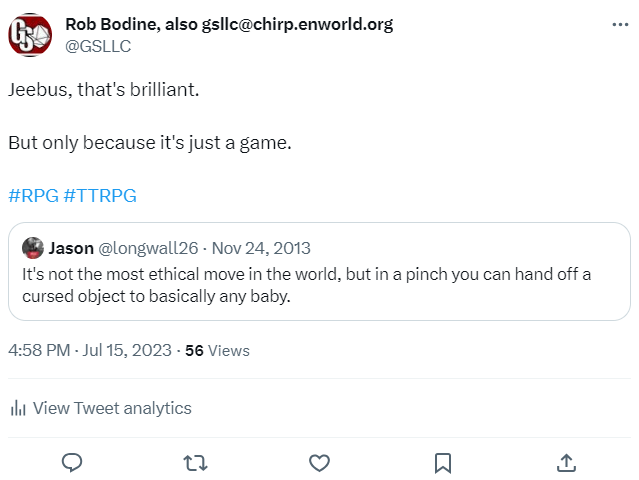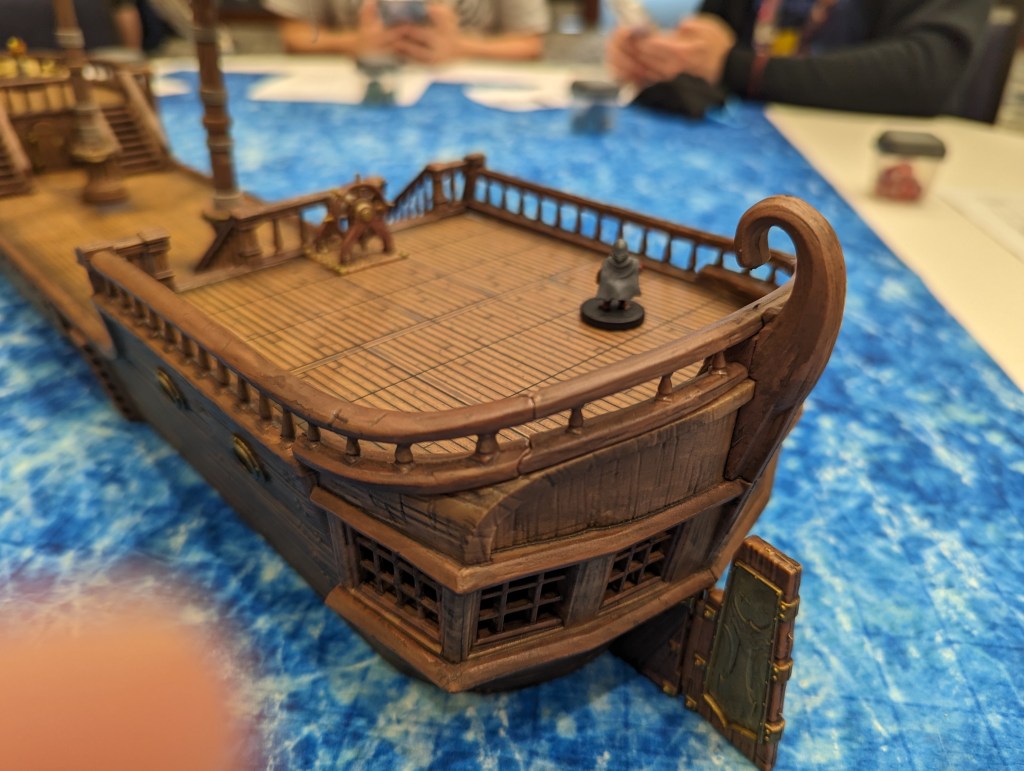If you enjoy this post, please retweet it (Twitter/X), boost it (Mastodon), repost it (MeWe), or repost it (BlueSky).
My thoughts on Gary Con will be brief. I doubt I’ll return. This isn’t a criticism of the con anymore than a non-football fan not liking a football game is a criticism of how good of a job the NFL is doing. It’s simply something that doesn’t appeal to me. I know a few industry insiders — two were my roommates — which means I’m within a degree of separation of almost all of the legacy ones. For me, the highlight of the trip was talking about the past, present, and future of the industry with Stephen Radney-MacFarland, James Lowder, and Dave Christ. The direct topic is interesting to me, but even more, this conversation inevitability leads to a back-and-forth on intellectual property law (usually copyrights). So, yeah; I’m in for that. Other highlights are conversations with Stephen and Jason Dandy (a non-industry friend) and with Jason and his friend, Mark, on sociopolitical issues. These guys think very differently than I do on most issues, but we engage in a form of constructive dialogue that’s very rare today. I even discussed abortion and Citizen’s United with no fear of generating anger from any of them.
But I can do all of that over Zoom. I don’t need to spend hundreds of dollars on airfare, lodging, a convention badge, and grossly overpriced convention food to have these conversations. One could say the same thing about Winter Fantasy, but that’s a different animal. Just eyeballing it, I’d say I know about 50% of the people that attend, and when I’m not hanging out with them, I’m relaxing. It’s a genuinely relaxing vacation. The food is good, and the whole trip is just an awesome ritual. While Gary Con could become the same thing for me, I don’t need two of them. Winter Fantasy is enough.
YMMV
I hope it’s clear that I’m not saying I didn’t have a good time, and it’s certainly not to say that you wouldn’t. It’s a small-ish con, which is what I like about Winter Fantasy. I went with a mission to get to play (as opposed to DM) 1st Edition AD&D, and I played in three such games. I actually got to play the Dragon #56 bard in two of them. How many people can say they’ve done that? I got to play Stephen’s Delve game that uses a few mechanics that Vic and I added to our 4th Edition D&D game (e.g., “gang-up”), so I liked that. I got to finally make use of my Star Trek Adventures purchase by playing that game (granted, mere months before it’s rendered somewhat obsolete by its second edition). The only objective criticism I have is that there were too many tables in the rooms, which made it very difficult to hear your own DM/GM/judge, and I’m not alone in expressing that concern.

I saw only one celebrity (Pat Kilbane formerly of MadTV, with whom I spoke briefly), but I wasn’t looking for them. If that’s your thing, you may run into them for a selfie. The con was fairly easy to navigate, and I had no administrative difficulties at all.
All of this was good, but now that I’ve been there and done that, there’s no need to go back. I’m quite happy to have left Saturday so that I have all day Sunday to recover, and I return with added appreciation for both Winter Fantasy and my home gaming group. I don’t need this to be a regular thing, or even a sporadic thing, but if you’re a gamer, especially with an appreciation for its history, this is as good a con as any to attend.
Just expect to be inundated with some silliness. Every attendee got one of these.

I don’t think Luke knows what “personal” means.
Follow me on Twitter/X @gsllc
Follow me on Mastadon chirp.enworld.org/@gsllc
Follow me on MeWe robertbodine.52
Follow me on Blue Sky @robbodine
Follow Gary Con on Twitter/X @GaryCon
Follow DelveRPG on Twitter/X @DelveRPG






















